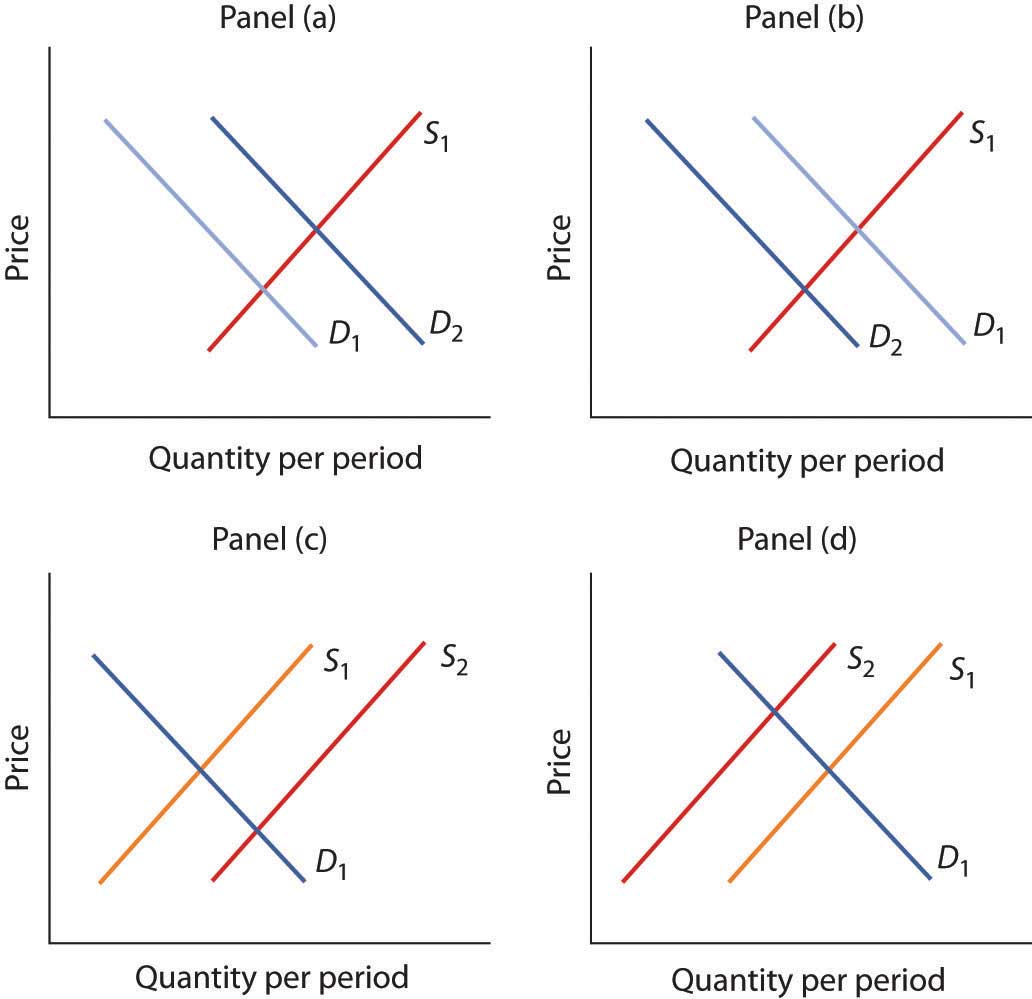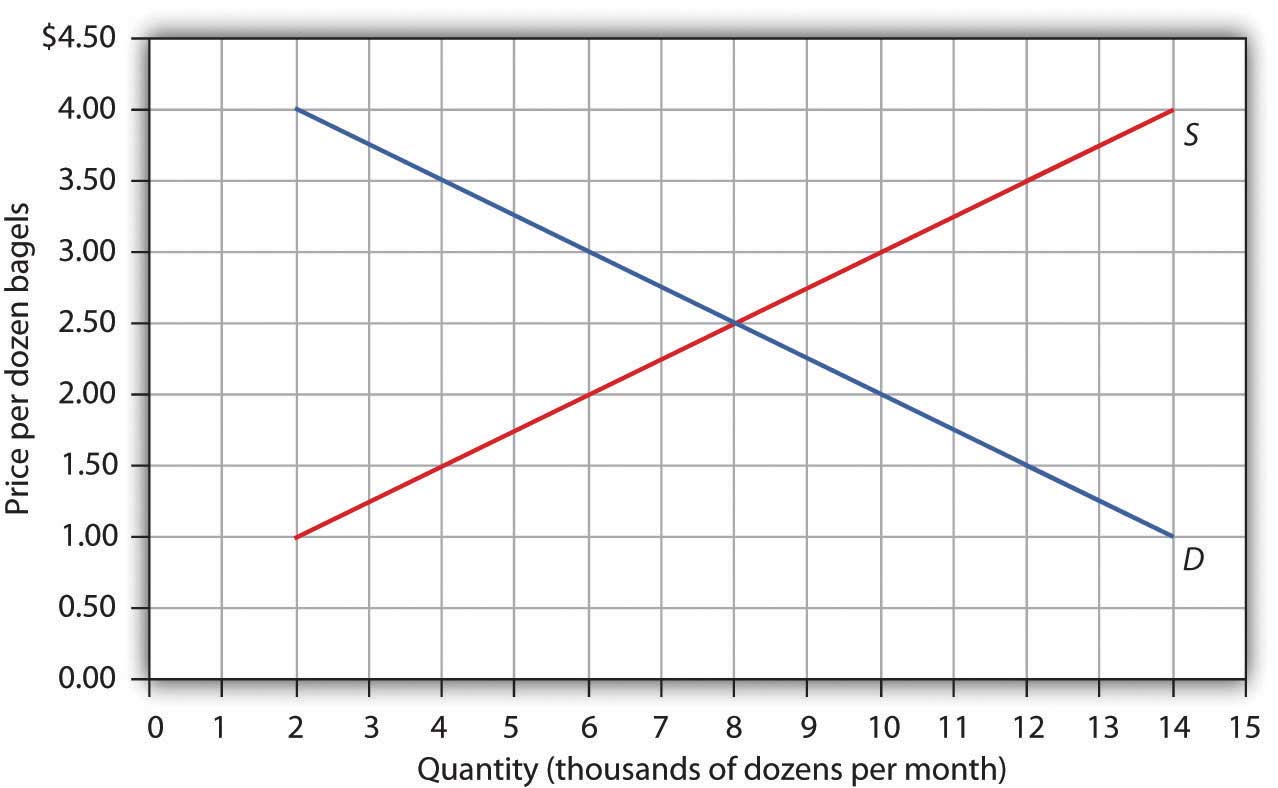In this chapter we have examined the model of demand and supply. We found that a demand curve shows the quantity demanded at each price, all other things unchanged. The law of demand asserts that an increase in price reduces the quantity demanded and a decrease in price increases the quantity demanded, all other things unchanged. The supply curve shows the quantity of a good or service that sellers will offer at various prices, all other things unchanged. Supply curves are generally upward sloping: an increase in price generally increases the quantity supplied, all other things unchanged.
The equilibrium price occurs where the demand and supply curves intersect. At this price, the quantity demanded equals the quantity supplied. A price higher than the equilibrium price increases the quantity supplied and reduces the quantity demanded, causing a surplus. A price lower than the equilibrium price increases the quantity demanded and reduces the quantity supplied, causing a shortage. Usually, market surpluses and shortages are short-lived. Changes in demand or supply, caused by changes in the determinants of demand and supply otherwise held constant in the analysis, change the equilibrium price and output. The circular flow model allows us to see how demand and supply in various markets are related to one another.
Which of the following goods are likely to be classified as normal goods or services? Inferior? Defend your answer.
Which of the following pairs of goods are likely to be classified as substitutes? Complements? Defend your answer.
A study found that lower airfares led some people to substitute flying for driving to their vacation destinations. This reduced the demand for car travel and led to reduced traffic fatalities, since air travel is safer per passenger mile than car travel. Using the logic suggested by that study, suggest how each of the following events would affect the number of highway fatalities in any one year.
The graphs below show four possible shifts in demand or in supply that could occur in particular markets. Relate each of the events described below to one of them.

Problems 1–5 are based on the graph below.

Problems 6–9 are based on the model of demand and supply for coffee as shown in Figure 3.10 "Changes in Demand and Supply". You can graph the initial demand and supply curves by using the following values, with all quantities in millions of pounds of coffee per month:
| Price | Quantity demanded | Quantity supplied |
|---|---|---|
| $3 | 40 | 10 |
| 4 | 35 | 15 |
| 5 | 30 | 20 |
| 6 | 25 | 25 |
| 7 | 20 | 30 |
| 8 | 15 | 35 |
| 9 | 10 | 40 |
Problems 10–15 are based on the demand and supply schedules for gasoline below (all quantities are in thousands of gallons per week):
| Price per gallon | Quantity demanded | Quantity supplied |
|---|---|---|
| $1 | 8 | 0 |
| 2 | 7 | 1 |
| 3 | 6 | 2 |
| 4 | 5 | 3 |
| 5 | 4 | 4 |
| 6 | 3 | 5 |
| 7 | 2 | 6 |
| 8 | 1 | 7 |